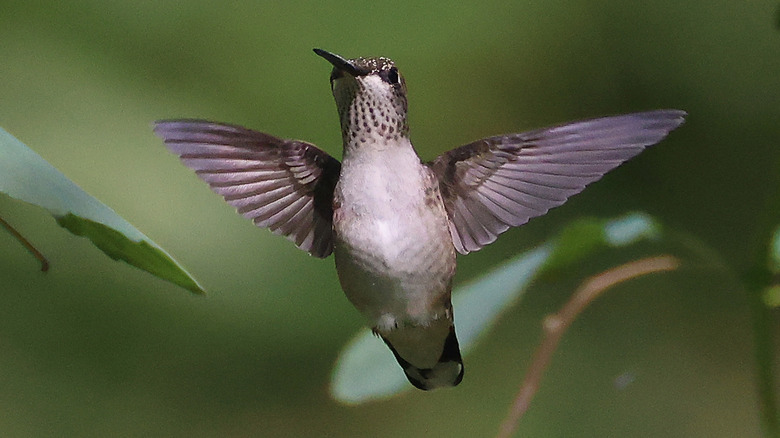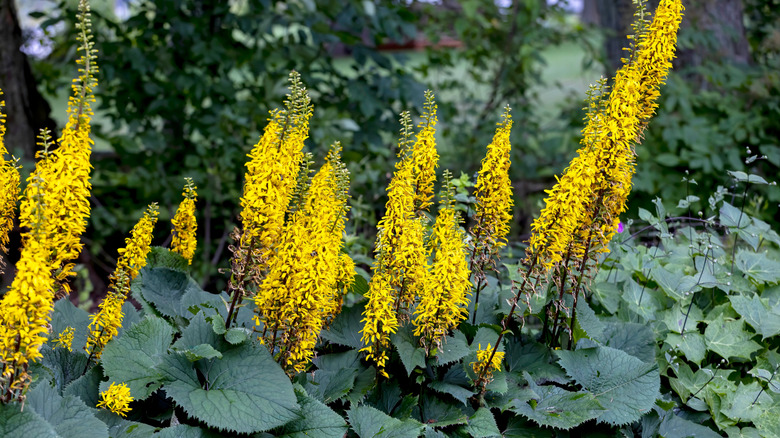The Trouble-Free Flowering Stunner That'll Attract Hummingbirds To Your Shade Garden
While there are numerous types of flowers that hummingbirds absolutely love, many of these options require part to full sun. This can be challenging for shade gardens, which typically receive fewer than four hours of sunlight per day due to the presence of trees, shadows of buildings, or being located on the northern edge of your property. Before you settle for non-flowering plants though, know that you do have a few options that you can plant and still attract hummingbirds to a shade garden. One possible option is the leopard plant (Ligularia 'Bottle Rocket'), which produces flowers that can benefit pollinators while thriving in shaded environments requiring little upkeep.
The leopard plant can make a suitable addition for homes with shade gardens while possibly attracting hummingbirds. It is among the perennials that bloom with bright yellow flowers that can look beautiful in a shade garden while also providing nectar to hummingbirds. While hummingbirds are famously attracted to the color red, they are also known to visit other bright-colored flowers, including yellow, orange, and pink. The yellow flowers of the leopard plant look similar to daisies, and the plants have tall spires that can grow up to 40 inches tall. Due to its need for little sun and moist soil, leopard plant is indicated for USDA hardiness zones 4 through 8.
Tips for growing leopard plant for both your garden and hummingbirds
Before planting Ligularia 'Bottle Rocket' in your garden, keep in mind that this perennial does best in shade. As such, you will also need to know the essential tips for growing a flourishing shade garden to ensure the plants do not get too much sun. The leopard plant needs a lot of room to grow, with some plants spreading out as much as 5 feet. It's also important to plant this flower in a part of your garden that is shielded from excessive winds. Unlike other plants that need well-draining soil, the leopard plant can thrive in large amounts of water. Still, it's important to keep tabs on soil moisture when growing this plant in your garden. This perennial prefers wet soil, so if it hasn't rained in your area lately, it's important to provide water on a frequent basis. You can tell the plant is not getting enough water if it starts to droop.
Another consideration is the peak blooming time, which typically happens in June and July, and can continue through the early fall months. Having the leopard plant available for hummingbirds can support recently-hatched juveniles who tend to start feeding on their own during the summer months. Preparing a hummingbird-friendly garden this time of year can also help feed these birds as they start preparing for their upcoming fall migration season. For these reasons, consider planting your leopard plant in early fall so they can be fully established for the following spring. Alternatively, it can still be planted in early spring and possibly bloom by summer.

